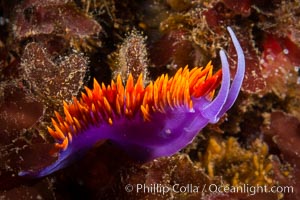
Spanish shawl nudibranch.
Species: Purple aeolis, Spanish shawl, Flabellina iodinea, Flabellinopsis iodinea
Location: San Diego, California
Image ID: 34204
Species: Purple aeolis, Spanish shawl, Flabellina iodinea, Flabellinopsis iodinea
Location: San Diego, California
Image ID: 34204
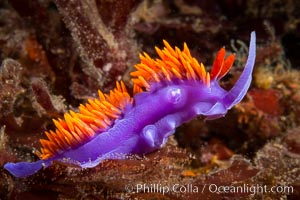
Spanish shawl nudibranch.
Species: Purple aeolis, Spanish shawl, Flabellina iodinea, Flabellinopsis iodinea
Location: San Diego, California
Image ID: 34205
Species: Purple aeolis, Spanish shawl, Flabellina iodinea, Flabellinopsis iodinea
Location: San Diego, California
Image ID: 34205
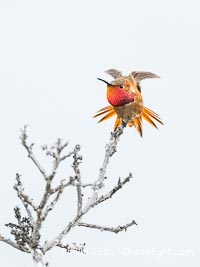
Rufous Hummingbird Brilliant Gorget Display While Perched, Coast Walk, La Jolla.
Species: Rufous Hummingbird, Selasphorus rufus
Location: La Jolla, California
Image ID: 40263
Species: Rufous Hummingbird, Selasphorus rufus
Location: La Jolla, California
Image ID: 40263
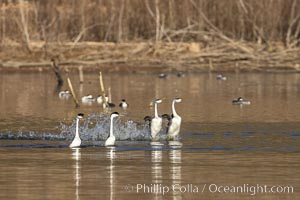
Western Grebes Rushing on Lake Hodges.
Species: Western grebe, Aechmophorus occidentalis
Location: Lake Hodges, San Diego, California
Image ID: 36775
Species: Western grebe, Aechmophorus occidentalis
Location: Lake Hodges, San Diego, California
Image ID: 36775
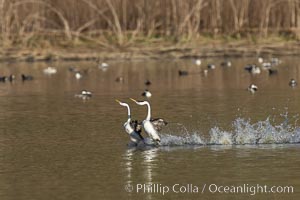
Western Grebes Rushing on Lake Hodges.
Species: Western grebe, Aechmophorus occidentalis
Location: Lake Hodges, San Diego, California
Image ID: 36776
Species: Western grebe, Aechmophorus occidentalis
Location: Lake Hodges, San Diego, California
Image ID: 36776
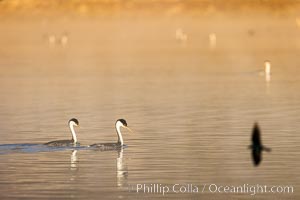
Courting Pair of Western Grebes at Sunrise, mist of Lake Hodges, San Diego.
Species: Western grebe, Aechmophorus occidentalis
Location: Lake Hodges, San Diego, California
Image ID: 36777
Species: Western grebe, Aechmophorus occidentalis
Location: Lake Hodges, San Diego, California
Image ID: 36777
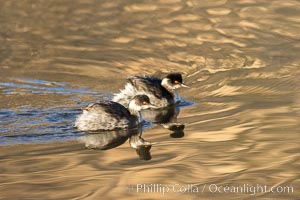
Eared Grebes on Lake Hodges, immature / non-mating pair, San Diego.
Location: Lake Hodges, San Diego, California
Image ID: 36778
Location: Lake Hodges, San Diego, California
Image ID: 36778
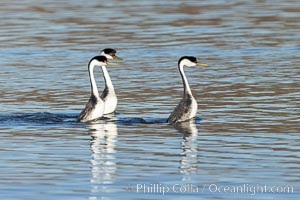
Courting Trio of Western Grebes.
Species: Western grebe, Aechmophorus occidentalis
Location: Lake Hodges, San Diego, California
Image ID: 36780
Species: Western grebe, Aechmophorus occidentalis
Location: Lake Hodges, San Diego, California
Image ID: 36780
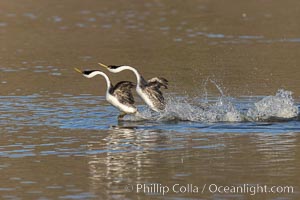
Western Grebes Rushing on Lake Hodges.
Species: Western grebe, Aechmophorus occidentalis
Location: Lake Hodges, San Diego, California
Image ID: 36782
Species: Western grebe, Aechmophorus occidentalis
Location: Lake Hodges, San Diego, California
Image ID: 36782
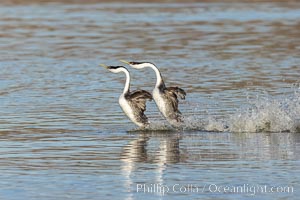
Western Grebes Rushing on Lake Hodges.
Species: Western grebe, Aechmophorus occidentalis
Location: Lake Hodges, San Diego, California
Image ID: 36783
Species: Western grebe, Aechmophorus occidentalis
Location: Lake Hodges, San Diego, California
Image ID: 36783
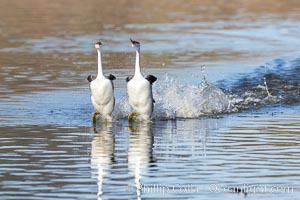
Western Grebes Rushing on Lake Hodges. Synchronized rushing, where (usually) a male and female run across the water, lasts for only a few seconds. It is one of the most spectacular behaviors seen among birds.
Species: Western grebe, Aechmophorus occidentalis
Location: Lake Hodges, San Diego, California
Image ID: 36786
Species: Western grebe, Aechmophorus occidentalis
Location: Lake Hodges, San Diego, California
Image ID: 36786
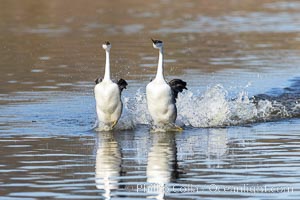
Western Grebes Rushing on Lake Hodges.
Species: Western grebe, Aechmophorus occidentalis
Location: Lake Hodges, San Diego, California
Image ID: 36787
Species: Western grebe, Aechmophorus occidentalis
Location: Lake Hodges, San Diego, California
Image ID: 36787
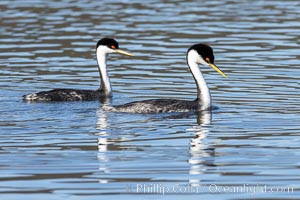
Courting Pair of Western Grebes, Lake Hodges, San Diego.
Species: Western grebe, Aechmophorus occidentalis
Location: Lake Hodges, San Diego, California
Image ID: 36788
Species: Western grebe, Aechmophorus occidentalis
Location: Lake Hodges, San Diego, California
Image ID: 36788
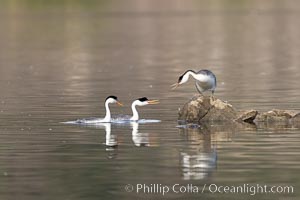
Clarks Grebes (left) and Western Grebe (right), arguing over a rock, Lake Hodges.
Species: Clarks grebe, Western grebe, Aechmophorus clarkii, Aechmophorus occidentalis
Image ID: 36882
Species: Clarks grebe, Western grebe, Aechmophorus clarkii, Aechmophorus occidentalis
Image ID: 36882
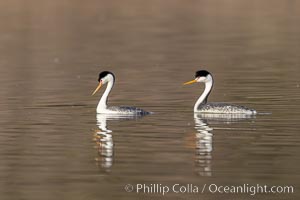
Clarks Grebes, courting pair, Lake Hodges.
Species: Clarks grebe, Aechmophorus clarkii
Image ID: 36884
Species: Clarks grebe, Aechmophorus clarkii
Image ID: 36884
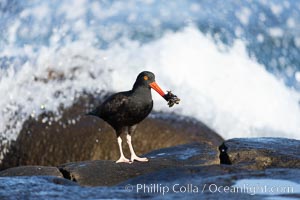
Black Oystercatcher foraging for food, Haematopus bachmani.
Species: Black Oystercatcher, Haematopus bachmani
Location: La Jolla, California
Image ID: 37719
Species: Black Oystercatcher, Haematopus bachmani
Location: La Jolla, California
Image ID: 37719
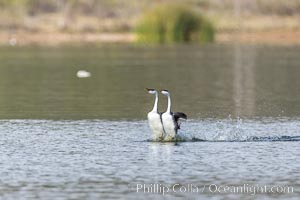
Western Grebes rushing in a courtship display. Rushiing grebes run across the water 60 feet (20m) or further with their feet hitting the water as rapidly as 20 times per second.
Species: Western grebe, Aechmophorus occidentalis
Location: Lake Hodges, San Diego, California
Image ID: 37851
Species: Western grebe, Aechmophorus occidentalis
Location: Lake Hodges, San Diego, California
Image ID: 37851
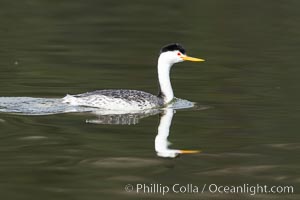
Clark's grebe, Aechmophorus clarkii, Lake Hodges, San Diego.
Species: Clark's grebe, Aechmophorus clarkii
Location: Lake Hodges, San Diego, California
Image ID: 37853
Species: Clark's grebe, Aechmophorus clarkii
Location: Lake Hodges, San Diego, California
Image ID: 37853
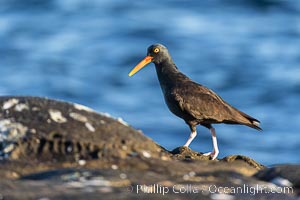
Black Oystercatcher foraging for food, Haematopus bachmani.
Location: La Jolla, California
Image ID: 38635
Location: La Jolla, California
Image ID: 38635
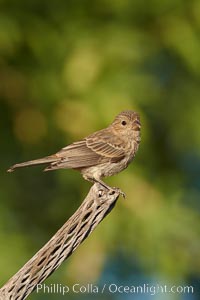
House finch, female.
Species: House finch, Carpodacus mexicanus
Location: Amado, Arizona
Image ID: 22899
Species: House finch, Carpodacus mexicanus
Location: Amado, Arizona
Image ID: 22899
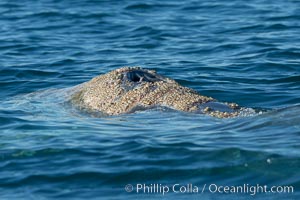
Gray whale dorsal aspect showing blowhole and characteristic skin mottling and ectoparasitic barnacles and whale lice (amphipod crustaceans).
Species: Gray whale, Eschrichtius robustus
Location: San Diego, California
Image ID: 30456
Species: Gray whale, Eschrichtius robustus
Location: San Diego, California
Image ID: 30456
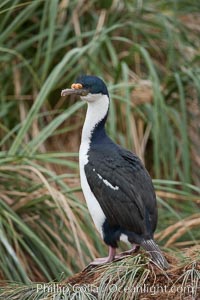
Imperial shag or blue-eyed shag, in tussock grass. The Imperial Shag is about 30" long and 4-8 lbs, with males averaging larger than females. It can dive as deep as 80' while foraging for small benthic fish, crustaceans, polychaetes, gastropods and octopuses.
Species: Imperial shag, Leucocarbo atriceps, Phalacrocorax atriceps
Location: New Island, Falkland Islands, United Kingdom
Image ID: 23761
Species: Imperial shag, Leucocarbo atriceps, Phalacrocorax atriceps
Location: New Island, Falkland Islands, United Kingdom
Image ID: 23761
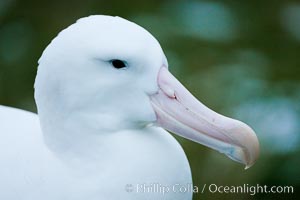
Wandering albatross, on nest and the Prion Island colony. The wandering albatross has the largest wingspan of any living bird, with the wingspan between, up to 12' from wingtip to wingtip. It can soar on the open ocean for hours at a time, riding the updrafts from individual swells, with a glide ratio of 22 units of distance for every unit of drop. The wandering albatross can live up to 23 years. They hunt at night on the open ocean for cephalopods, small fish, and crustaceans. The survival of the species is at risk due to mortality from long-line fishing gear.
Species: Wandering albatross, Diomedea exulans
Location: Prion Island, South Georgia Island
Image ID: 24385
Species: Wandering albatross, Diomedea exulans
Location: Prion Island, South Georgia Island
Image ID: 24385
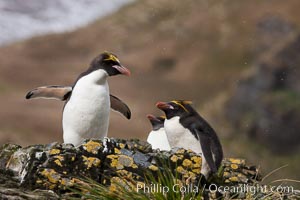
Macaroni penguins, on the rocky shoreline of Hercules Bay, South Georgia Island. One of the crested penguin species, the macaroni penguin bears a distinctive yellow crest on its head. They grow to be about 12 lb and 28" high. Macaroni penguins eat primarily krill and other crustaceans, small fishes and cephalopods.
Species: Macaroni penguin, Eudyptes chrysolophus
Location: Hercules Bay, South Georgia Island
Image ID: 24390
Species: Macaroni penguin, Eudyptes chrysolophus
Location: Hercules Bay, South Georgia Island
Image ID: 24390
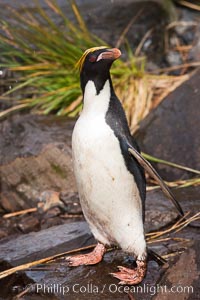
Macaroni penguin, on the rocky shoreline of Hercules Bay, South Georgia Island. One of the crested penguin species, the macaroni penguin bears a distinctive yellow crest on its head. They grow to be about 12 lb and 28" high. Macaroni penguins eat primarily krill and other crustaceans, small fishes and cephalopods.
Species: Macaroni penguin, Eudyptes chrysolophus
Location: Hercules Bay, South Georgia Island
Image ID: 24393
Species: Macaroni penguin, Eudyptes chrysolophus
Location: Hercules Bay, South Georgia Island
Image ID: 24393
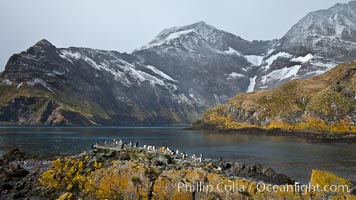
Macaroni penguins, on the rocky shoreline of Hercules Bay, South Georgia Island. One of the crested penguin species, the macaroni penguin bears a distinctive yellow crest on its head. They grow to be about 12 lb and 28" high. Macaroni penguins eat primarily krill and other crustaceans, small fishes and cephalopods.
Species: Macaroni penguin, Eudyptes chrysolophus
Location: Hercules Bay, South Georgia Island
Image ID: 24391
Species: Macaroni penguin, Eudyptes chrysolophus
Location: Hercules Bay, South Georgia Island
Image ID: 24391
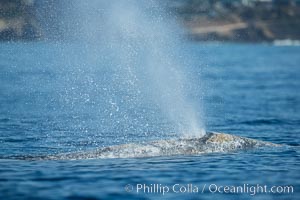
Gray whale dorsal aspect showing blowhole and characteristic skin mottling and ectoparasitic barnacles and whale lice (amphipod crustaceans).
Species: Gray whale, Eschrichtius robustus
Location: San Diego, California
Image ID: 30465
Species: Gray whale, Eschrichtius robustus
Location: San Diego, California
Image ID: 30465
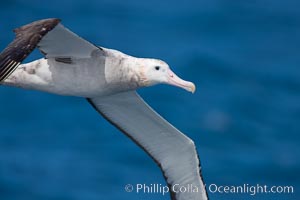
Wandering albatross in flight, over the open sea. The wandering albatross has the largest wingspan of any living bird, with the wingspan between, up to 12' from wingtip to wingtip. It can soar on the open ocean for hours at a time, riding the updrafts from individual swells, with a glide ratio of 22 units of distance for every unit of drop. The wandering albatross can live up to 23 years. They hunt at night on the open ocean for cephalopods, small fish, and crustaceans. The survival of the species is at risk due to mortality from long-line fishing gear.
Species: Wandering albatross, Diomedea exulans
Location: Southern Ocean
Image ID: 24070
Species: Wandering albatross, Diomedea exulans
Location: Southern Ocean
Image ID: 24070
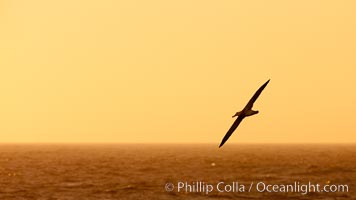
Wandering albatross in flight, over the open sea. The wandering albatross has the largest wingspan of any living bird, with the wingspan between, up to 12' from wingtip to wingtip. It can soar on the open ocean for hours at a time, riding the updrafts from individual swells, with a glide ratio of 22 units of distance for every unit of drop. The wandering albatross can live up to 23 years. They hunt at night on the open ocean for cephalopods, small fish, and crustaceans. The survival of the species is at risk due to mortality from long-line fishing gear.
Species: Wandering albatross, Diomedea exulans
Location: Southern Ocean
Image ID: 24092
Species: Wandering albatross, Diomedea exulans
Location: Southern Ocean
Image ID: 24092
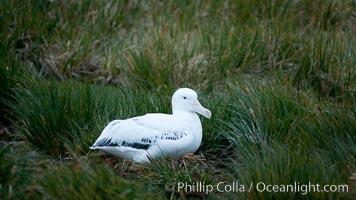
Wandering albatross, on nest in the Prion Island colony. The wandering albatross has the largest wingspan of any living bird, with the wingspan between, up to 12' from wingtip to wingtip. It can soar on the open ocean for hours at a time, riding the updrafts from individual swells, with a glide ratio of 22 units of distance for every unit of drop. The wandering albatross can live up to 23 years. They hunt at night on the open ocean for cephalopods, small fish, and crustaceans. The survival of the species is at risk due to mortality from long-line fishing gear.
Species: Wandering albatross, Diomedea exulans
Location: Prion Island, South Georgia Island
Image ID: 24394
Species: Wandering albatross, Diomedea exulans
Location: Prion Island, South Georgia Island
Image ID: 24394